ANIMALS
29 Myths About Penguins That Just Aren’t True
Published
4 months agoon
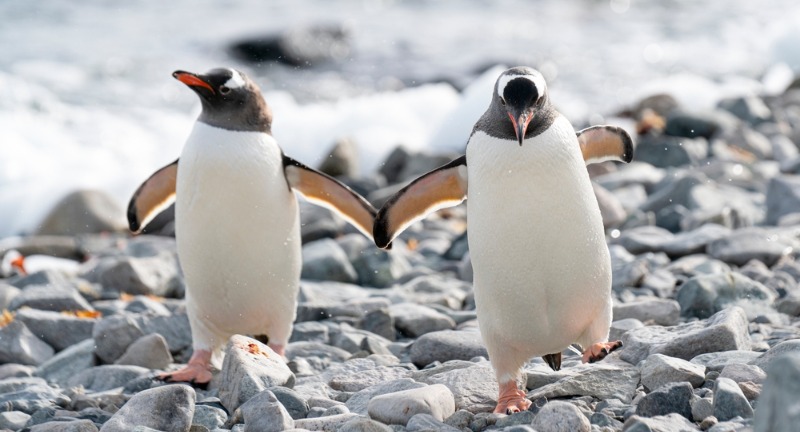
Shutterstock
Penguins are an adorable contrast to the cold, icy environment of Antarctica. Their natural cuteness makes them quite a popular animal in the public eye, but it unfortunately also makes them popular in the realm of misinformation. Most people will never see a Penguin in the wild, but that’s no excuse to stay misinformed. Plus, a few cute Penguins are sure to brighten anyone’s day. So let’s analyze 29 points of misinformation and debunk each one.
Myth: Penguins Are Clumsy

Shutterstock
This misconception of Penguins tends to stem from an association between the Penguins and waddling. Sure, when the terrain calls for it, Penguins do waddle, but that’s out of comfort, rather than clumsiness. Plus, watching them slide on the snow or glide under the water could only be described as graceful.
Myth: Penguins Have Short Lifespans

Shutterstock
Many animals in the animal kingdom have relatively short lifespans, but Penguins are an exception to this trend. Instead of aging in Dog years, they age in Penguin years! To be specific, it’s possible for some Penguin species to live for about 20 years when uninterrupted in the wild.
Myth: Penguins Live In The North Pole

Shutterstock
Many Christmas ornaments and traditions are responsible for spreading this myth, but unfortunately, it is just a myth, and you won’t find a Penguin on the north pole. This actually works in the favor of our feathered friends, because of a certain predatory animal you’ll find exclusively in northern hemispheres. If a hungry Polar Bear met a Penguin, it’s likely that the Bear would try to make a snack out of them, considering they eat Puffins, which are similar in size to some Penguins.
Myth: All Penguins Live In Icy Environments

Shutterstock
Many people associate Penguins with the continent of Antarctica, but some Penguins live on other continents entirely! There are many species of Penguins that can tolerate warmer climates (albeit slightly), such as the Humboldt Penguin, native to South America, or the aptly named African Penguin, native to Africa.
Myth: Penguins Don’t Sleep

Shutterstock
Though Penguins do require rest like any other animal, the way that they get it is somewhat unusual. Rather than take a period of downtime at night, Penguins prefer taking short naps that are spread out throughout the day. They may be Penguins, but they do love their Cat naps!
Myth: Penguins Are Only Black And White

Shutterstock
The Macaroni Penguin is known for the yellow crest adorning its head, but that’s not the only example of a multicolored Penguin. Many Penguin feathers can be mistaken for black, but they’re often a darker shade of blue in actuality. Plus, if you were to look closely at an Emperor Penguin, you’d find an orange patch on it’s chest.
Myth: Penguins Are The Only Birds That Can’t Fly

Shutterstock
While they can’t fly in the air, the Penguins’ impeccable ability to glide seamlessly underwater resembles flying in its own way. In fact, the Gentoo Penguin, though short in stature, more than makes up for that by being the fastest-swimming bird in the entire world at 22 miles per hour.
Myth: All Penguins Are The Same Size

Shutterstock
Sure, to some degree, people are aware of the small disparities in Penguin height, but to many, they’re all at least in the same ballpark. In reality, while they are comparable in cuteness, the statement same does not extend to their height. The smallest Penguin species, the Little Blue Penguin, reaches only 10 inches tall! Towering over these adorable little peckers are the Emperor Penguins, who are roughly 4 feet tall.
Myth: Penguins Are Monogamous For Life

Shutterstock
Unfortunately, Penguins do not have any room for the idea of marriage in their culture, which does make sense, because they are animals, and don’t have any culture at all. If they did, perhaps they wouldn’t change partners sometimes between breeding seasons. Still, many Penguins do form unusually strong bonds with their mates, which is rarely seen in the animal kingdom.
Myth: Penguins Don’t Have Predators

Shutterstock
Sure, Penguins are fast, but that doesn’t mean they’re the fastest. Unfortunately, in the animal kingdom, cuteness does not put you at the top of the food chain. While Penguins have little to no trouble evading Sea Lions on land, it’s possible for them to be outmaneuvered and outpaced by Sharks or Orcas in the water.
Myth: Penguins Can’t Be Kept In Zoos

Shutterstock
While Penguins usually don’t enjoy vacations in areas with more tropical weather, it’s still possible to find them in zoos around the world. In spaces that mirror their original habitat, and especially spaces that are enclosed from the elements, Penguins can feel just as comfortable as they would at home.
Myth: Penguins Only Lay One Egg

Shutterstock
While this point is a myth, it’s only by barely. Penguins lay eggs based on their species’ breeding cycle, which for most species falls anywhere from March to August. At this time, mothers of most Penguin species will lay two eggs. Still, often times, only one egg of the two hatches successfully, and even then, some species like the Emperor Penguin only lay one egg.
Myth: Penguins Can’t Survive Without Ice

Shutterstock
We know that many Penguin species don’t rely on ice for survival, because many Penguin species don’t even live close to icy habitats! Sure, most Penguins enjoy colder climates the most, and those climates would naturally be covered in ice because of the temperature drop, but many species live further north in climates that are far warmer.
Myth: Penguins Have Teeth

Shutterstock
Penguins have beaks, but interestingly enough, that statement alone doesn’t mean that they don’t have teeth. Some bird species, like Geese or Toucans, possess beaks with serrated ridges, which function in similar ways to the teeth that many mammals have. While Penguins do possess tongues with tooth-like ridges, that still doesn’t mean that they have teeth.
Myth: Penguins Don’t Need To Drink Water

Shutterstock
Every living animal needs nutrient and fluid intake in some way. While many animals store food and water for long periods of hibernation, they still need to replenish their supplies at some point. The same idea also applies to Penguins as well. At a glance, it may seem as though they don’t drink water, but if you look closely, you’d see that they swallow seawater when swimming! They possess a Supraorbital gland which helps them to filter out the salt in the oceans. How’s that for a quick glass of water!
Myth: Penguins Always Waddle

Shutterstock
When picturing Penguins, it’s difficult to remove the idea of waddling from the mental image, because it’s almost as if the two go hand-in-hand. Of course, Penguins don’t exclusively waddle, since they have to swim to catch fish for food, but when they’re traveling larger distances, they may also slide on their bellies to spend less energy and move faster.
Myth: All Penguins Build Nests

Shutterstock
Many animals in the animal kingdom go to great lengths to protect their young. While many Penguins opt to build nests to protect their eggs, this doesn’t apply to every species. Perhaps the most popular type of Penguin, the Emperor Penguin is a great example of non-nest behavior, since they protect their eggs by carrying them in between their feet for extended periods of time.
Myth: All Penguins Look Alike

Shutterstock
Saying that all Penguins look alike and all Penguins share the same characteristics are not the same statement. While it’s true that all Penguins possess feathers and belong to the same family of animals, there are enough defining characteristics to separate them all into different species and subspecies. For starters, many Penguin species vary in height, but other defining characteristics, like beak shape, feather color, or behaviors tend to vary between different species as well.
Myth: Penguins Are Immune To Cold

Shutterstock
Some animals have an increased tolerance to cold, but that doesn’t mean that these defenses are perfectly infallible. Take Penguins, for instance. While many species have the physique to accommodate especially low temperatures, some colder nights will cause the Penguin colonies to huddle together for warmth.
Myth: Penguins Can’t Swim Long Distances

Shutterstock
As the fastest swimming bird on the earth, Penguins feel just as at-home in the water as they feel on land. Additionally, because their main source of food lives in the water, that being fish, many Penguins have to be accustomed to spending a long amount of time in the water. Couple that with their graceful aquatic athleticism, and you have one of the only birds on the planet that’s capable of swimming long distances.
Myth: Penguins Are Not Endangered

Shutterstock
You’d think that since Penguins live in such remote areas of the world, human interference wouldn’t be a factor in destabilizing their livelihood, yet here we are. Climate change and even overfishing are serious problems that Penguins have to contend with, and some species simply can’t keep up.
Myth: All Penguins Are Social And Live In Large Colonies

Shutterstock
Many movies love to portray Penguins as these extremely extraverted creatures that rely on each other for social needs as much as survival needs, but this often isn’t the case. Many Penguin Species, such as the Fiordland Penguin, don’t even nest anywhere close to other Penguins, even if they’re from the same species.
Myth: Penguins Are Easy To Keep As Pets

Shutterstock
Unless you’re secretly hiding the entire continent of Antarctica in your backyard, the suburbs may not be appropriate for Penguin life. There are a vast number of animals that can be kept as pets, and don’t require much maintenance. For Penguins, the odds of accommodating its needs are slim to none. If you really love your pet Penguin, you’ll hand it over to institutions that are more qualified. Make sure to pay it a visit every once in a while!
Myth: Penguins Are Mute

Shutterstock
Like most birds, Penguins make vocalizations with their mouths, typically for communication. For the vast majority of the animal kingdom that is larger than an insect, the ability to communicate with a voice is usually tied very closely with animal instincts, and Penguins are no exception.
Myth: Penguins Are Friendly To Humans

Shutterstock
Very few animals act friendly to humans when in the wild, unless they’re pets or they’ve been fed. Most of the time, animals are very cautious around humans, since they see them as a potential threat. For Penguins in particular, they usually act indifferently towards humans, but if their boundaries are overstepped, they may be forced to act more warily.
Myth: Penguins Have Poor Eyesight

Shutterstock
If Penguins had generally poor eyesight, they might go hungry every day! After all, it’s hard (and impossible) to catch fish by trying to hear or smell them underwater. Penguins actually possess incredibly refined vision regardless of habitat, whether they use it for food or to identify and evade predators.
Myth: Penguins Don’t Need To Worry About Sunburn

Shutterstock
White, icy environments, which are commonplace in Antarctica, have a high level of albedo, which is the term used for reflectiveness against the sun’s rays. To this end, even through their feathers, it’s possible for Penguins to get a sunburn! Plus, it’s difficult for many Penguins to get their flippers on a case of sunscreen, only compounding the problem!
Myth: Penguins’ Bones Are Hollow Like Other Birds

Shutterstock
Most birds possess hollow bones, but there’s a specific purpose for this biological phenomenon. Flight! Because of the weight loss that comes with the possession of hollow bones, many birds can fly for longer and by using less energy. In contrast, Penguin bones aren’t hollow, because they don’t need to be! Plus, the extra weight helps them to feel more comfortable in the water while they hunt for fish.
Myth: Penguins Can’t Dive Deep

Shutterstock
When fish happen to be scarce, Penguins are capable of altering the way they hunt, mainly in terms of depth. Penguins enjoy shallow water, but aren’t confined to it. After all, if an Emperor Penguin is feeling particularly adventurous, they’re capable of diving up to 1,800 feet!
Conclusion

Shutterstock
Penguins are usually content to keep to themselves and avoid problems, but sometimes, the problem seems to come to them. Human interference, and especially pollution, has been a major threatening presence for Penguin food sources and general livelihood. In events like these, it’s good to keep our feathered friends in the conversation, so we can always be willing to look into ways of protecting every life that we share the earth with.
More Amazing Animals+
-
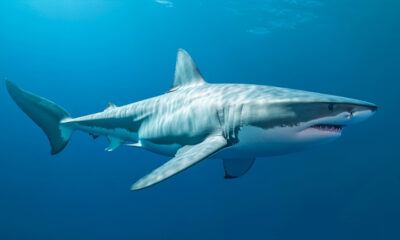

25 Fascinating Great White Shark Facts
-


Elk making a break for the trees.
-


Baby otter hugs and snuggles mom
-
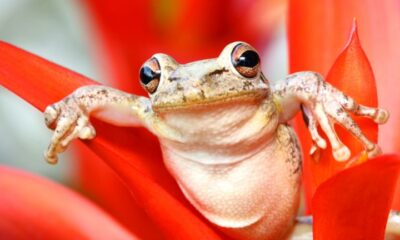

30 Most Interesting Mutualistic Relationships In Nature
-
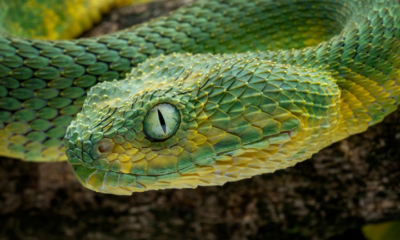

30 Most Venomous Animals In The World
-


Kibble Goes Refillable: Pet Food Company Cracks Down On Waste…
-
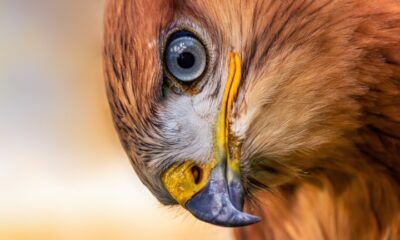

Hawk Yeah! 26 Facts About The Best Birds
-
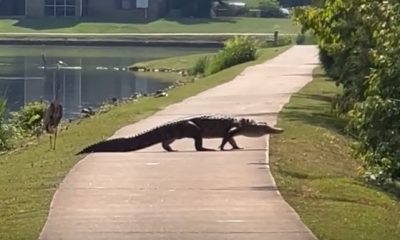

Alligator Crosses the Walkway with Bird Looking On in Hunstville,…
-
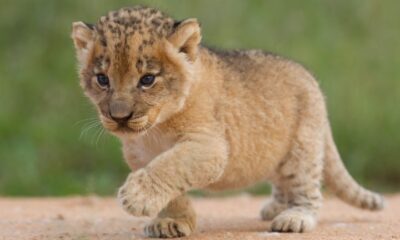

20 Random Facts About Lions That May Surprise You
-
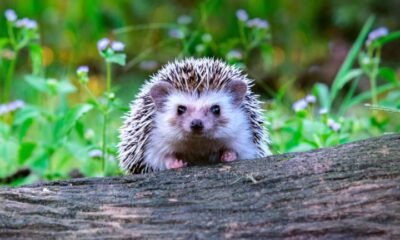

The Adorable World of Hedgehogs: 25 Things You Didn’t Know!
-
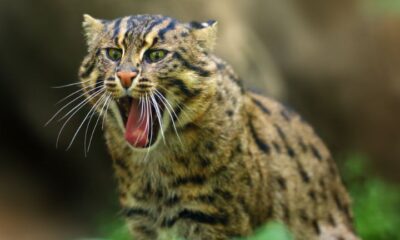

27 Animals With The Most Elaborate Hunting Strategies
-


26 Animals That Have The Cutest Babies
